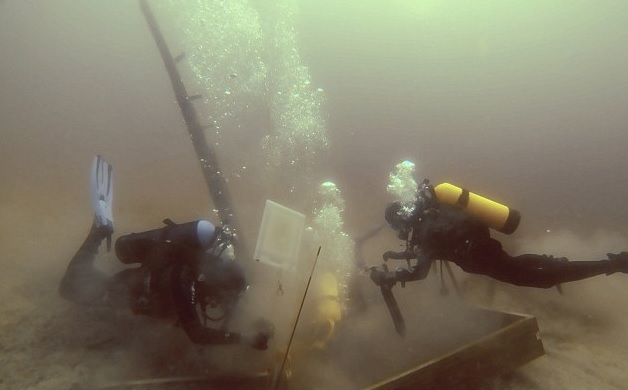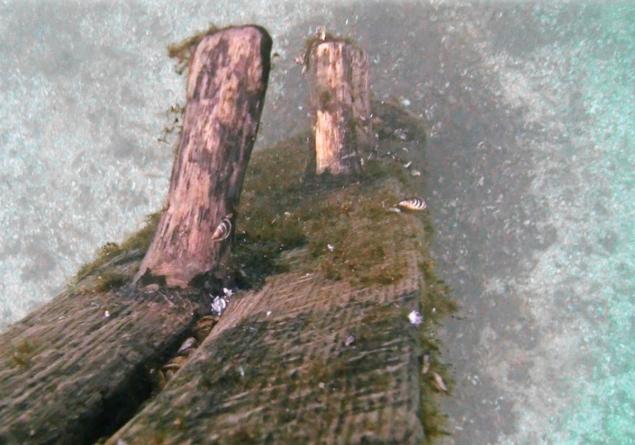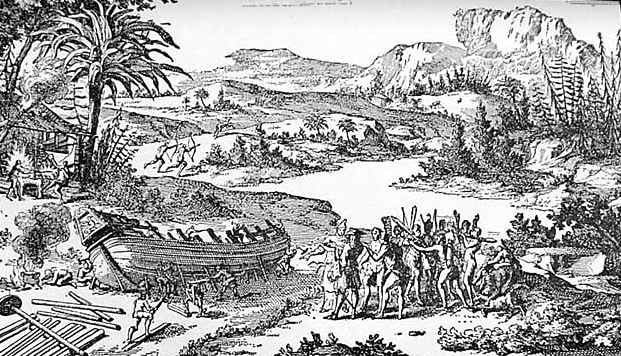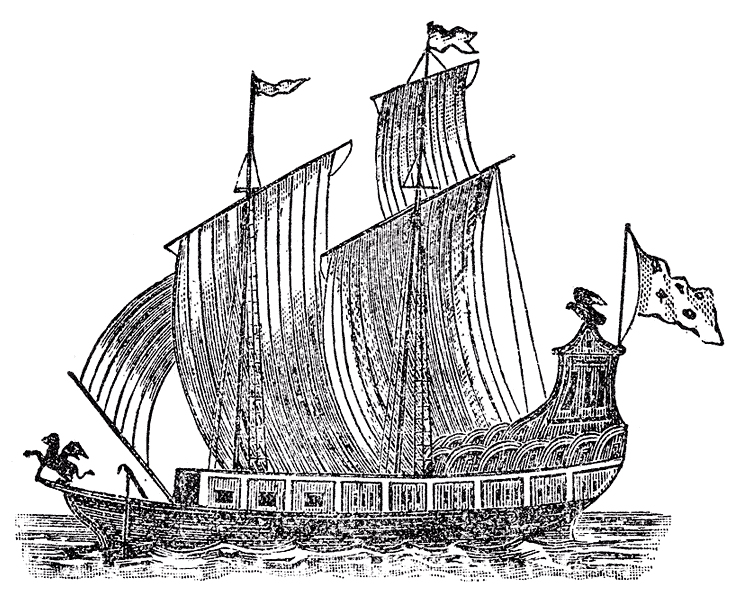Generally, when people think of shipwrecks, they think of them in the ocean. However, this is not always the case. During the 17th century, there was a French explorer who ended up losing his boat in Lake Michigan.
Steve Libert, who has been looking for this wreck for years, said that he and his crew found the debris of the ship about 120 feet from a spot where they removed a wooden slab a year before. They found that slab protruding from the lake bottom and thought it may have been a piece of the Frenchman’s ship. Libert thought for sure that it was the bowsprit from the Rene-Robert Cavelier, which was Sieur de La Salle’s ship. However, in 2013, the scientists who joined the excavation of the bowsprit said that the slab was more likely an abandoned fishing net stake.
This sad news did not crush Libert’s spirits. It’s been decades since the ship sank, so Libert and his crew would expect to find the ship in pieces. He describes the bottom of the lake as littered with what could be wooden planks from the ship’s bow; there were nails and pegs that were most likely used to connect the hull to the rest of the vessel, and there was also what could be the mast.
Libert had said that there were no guns or cannons found, or any other artifacts at all. Although this isn’t a big deal, those types of artifacts would have helped them identify the ruins faster. The nails, however, are believed to be similar to those of La Belle, which was another La Salle ship that sank near the Gulf of Mexico.
Libert and his group of researchers took pictures of the debris and sent the photos to French underwater archaeologists who had helped with excavating the bowsprit the year before. Those archaeologists will then work for the federal permits to excavate the entire area.

Dean Anderson, who is a Michigan state archaeologist, said that he wasn’t notified when the rest of the debris was found. He was also not sure of whether or not the ship was actually the Griffin. He did say, however, that the bowsprit was most likely just a fishing apparatus.
One of the archaeologists and divers on the team, Brian Abbott, said that the team is looking at an area nearly the size of a football field. The whole area is strewn with the ship’s debris, making it hard to take in and identify. The debris of the ship is near Poverty Island which is in the northwest area of Lake Michigan. It is about 50 feet below the surface.
What makes this find even more significant is the fact that it is the first European-designed ship that sailed the upper Great Lakes. It had six crew members who disappeared with the ship in 1679 when it was making its voyage toward Green Bay, Wisconsin. The Griffin was a sailing ship built on the Niagara River in the 1670s. La Salle had hoped to use the ship in order to find the Northwest Passage to China and Japan. However, the ship vanished in 1679.
La Salle generally explored the Great Lakes region of the United States and Canada. He even managed to explore the Mississippi River and the Gulf of Mexico. He was born in St. Herbland parish, Rouen, France on November 22, 1643 and lived until the year of 1687. He was very interested in the reports of a great river system and he thought that it flowed into the Gulf of California, providing a passage to China. This is where his love for exploration began and why he ended up in Lake Michigan.
La Salle sold his holdings in 1669 and began his first major exploration. He had discovered the Ohio River, but due to the desertion of his followers, he was forced to turn back just short of the Mississippi River. This unfortunate decision led to Joliet-Marquette discovering the Ohio River in 1673.
After making two trips back to France in 1674 and 1677, he received a grant which included the Fort Frontenac site. He then built a sailing vessel for the Great Lakes, hoping to build a chain of trading posts across Illinois down to Mississippi. La Salle was convinced that the Mississippi emptied into the Gulf of Mexico and not the Pacific Ocean (he called it the South Sea.)
For the next three years, La Salle made Native American alliances, and built an entrepot at Niagara and a fort in Illinois. In the winter of 1682, he sledded down the Illinois River to the Mississippi, and once the ice melted he canoed down it, reaching the mouth of the eastern passes on April 7, 1682.

La Salle ended up claiming all the lands that were drained by river for France. He named all of the French territory La Louisiane in honor of the French king, Louis XIV. He returned to France in 1683 to obtain royal support for the voyage to the Mississippi and the Gulf of Mexico. During that voyage, he hoped to establish a colony that was a secure distance from the river.
However, this expedition did not go as planned. The voyage began from La Rochelle on July 24, 1684. La Salle ended up missing the mouth of the Mississippi and landed the colonists at Matagorda Bay on the Texas coast on February 20, 1685. He believed that Mississippi was near Texas, so he was not worried.
In order to establish his location, he explored westward from his Fort St. Louis on Garcitas Creek (Victoria County) to almost as far as the Pecos River. He even managed to go as far eastward as beyond the Trinity River. His second eastward journey proved to be disastrous. Hoping that he would make it to his post on the Illinois River, he was killed on March 19, 1687 by Pierre Duhaut, who was a disenchanted follower. In some accounts the site of La Salle’s murder was in Grimes County or the Cherokee country, however, it was actually east of the Trinity River.

Many have said that La Salle’s projects ended in failure. However, his explorations were significant landmarks. He was responsible for opening the Mississippi valley for development and his entry into the Gulf of Mexico sparked Spanish exploration in the Gulf region. La Salle’s colony gave the French the claim to Texas, which caused the Spaniards to occupy Texas and Pensacola Bay. Because of all of the exploration La Salle did, the United States was able to register Texas under the Louisiana Purchase. The boundary issues between the United States and Spain remained until the Adams-Onis Treaty of 1819.
What is still being questioned by many historians was the fact that of the 200 people who traveled with him to Texas in 1685, only 15 remained alive only five years later. Many believe he was an inadequate leader when it came to colonization.
